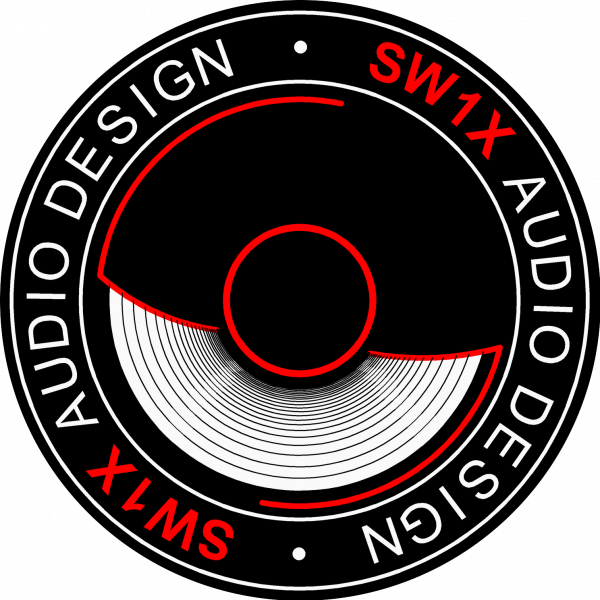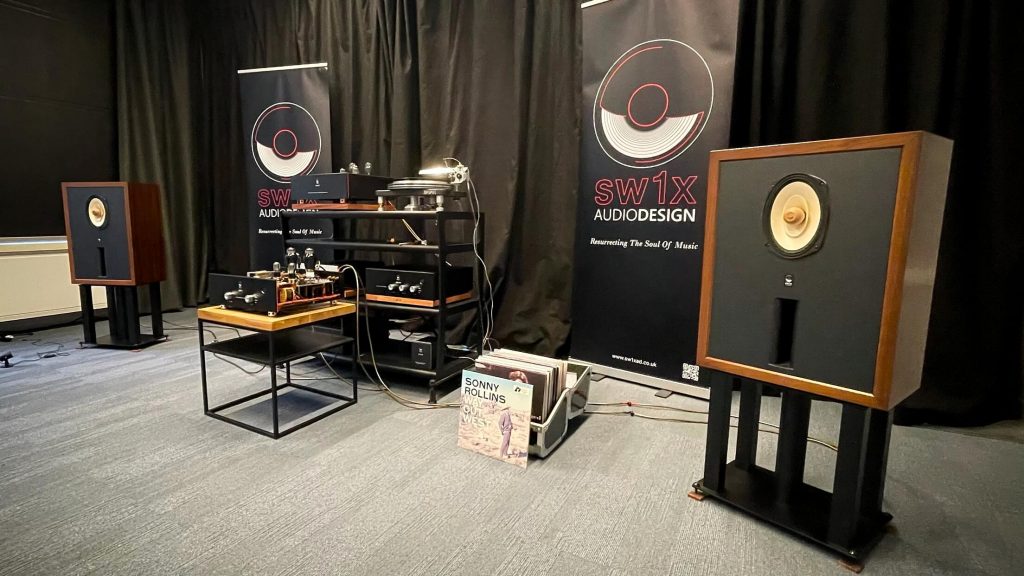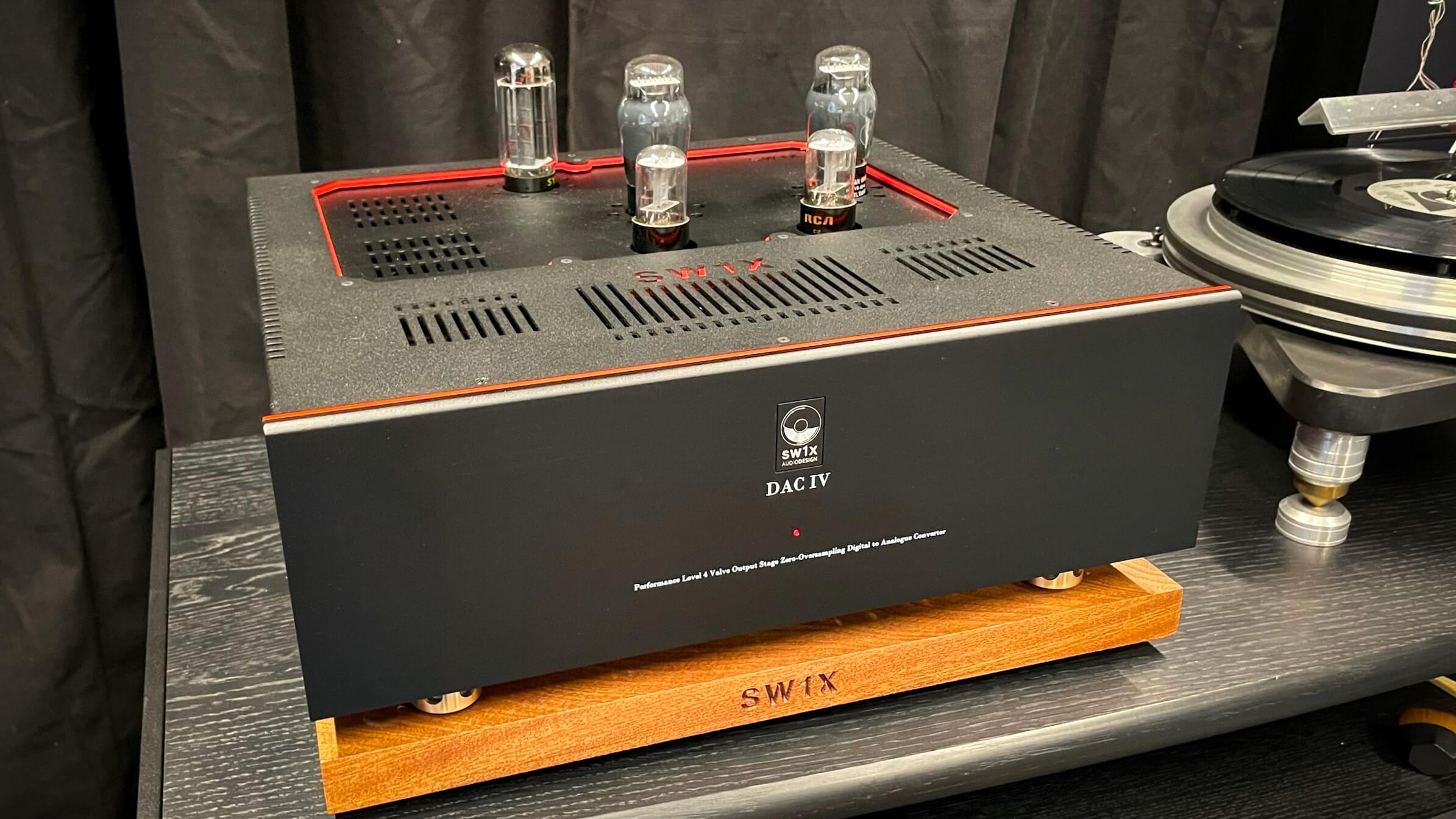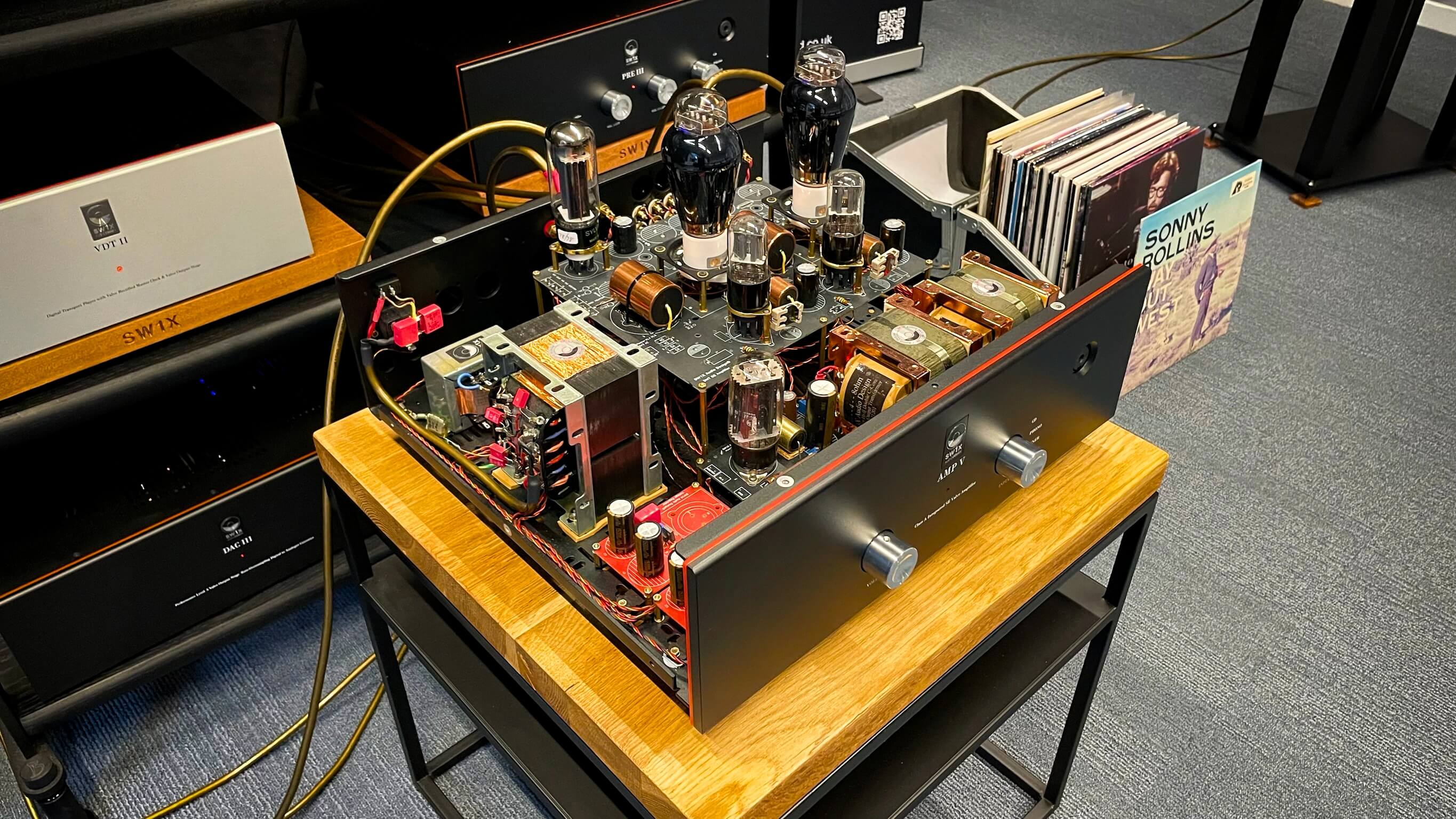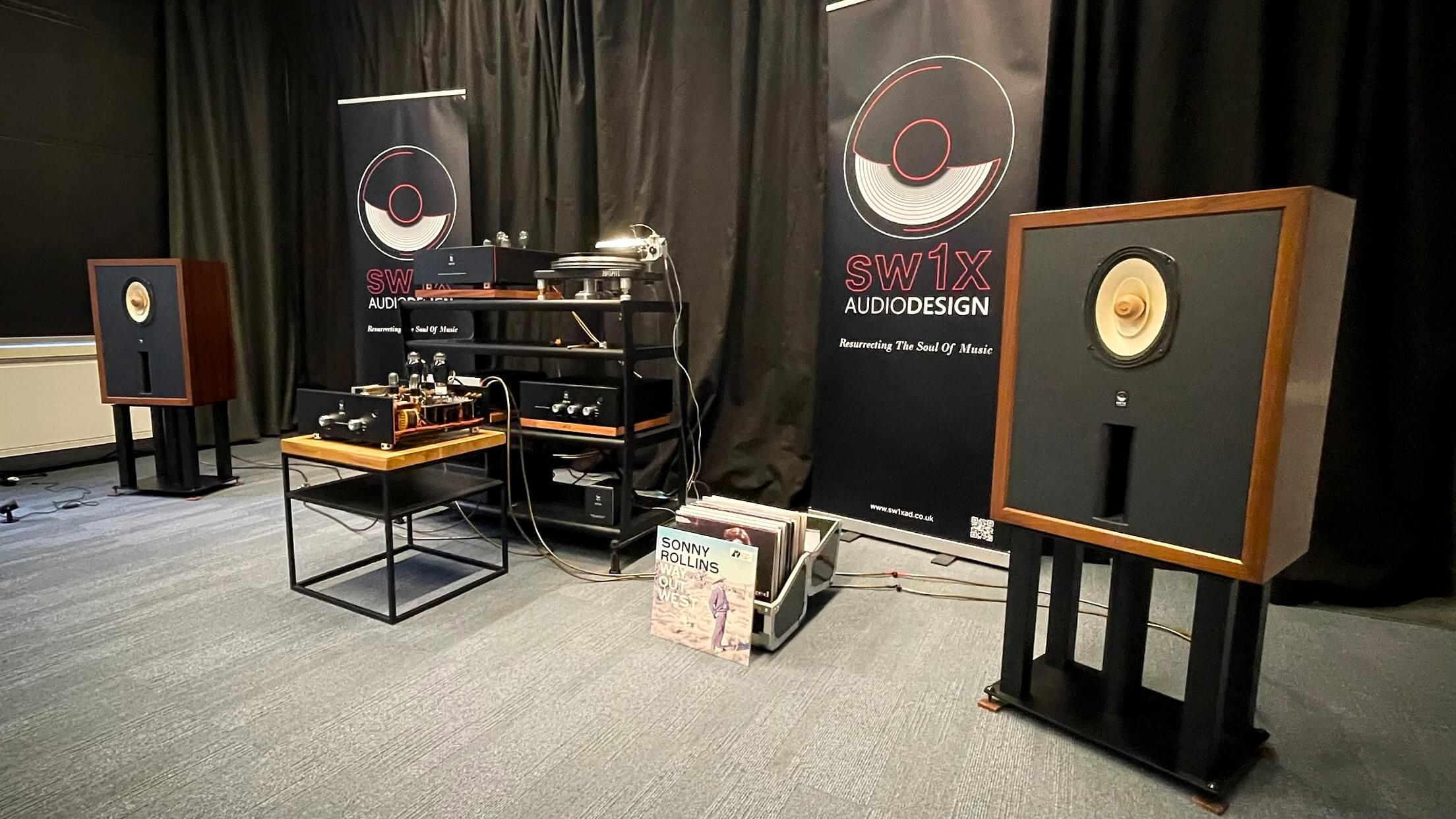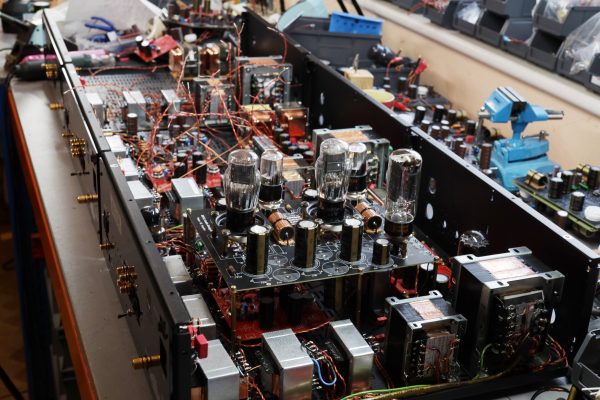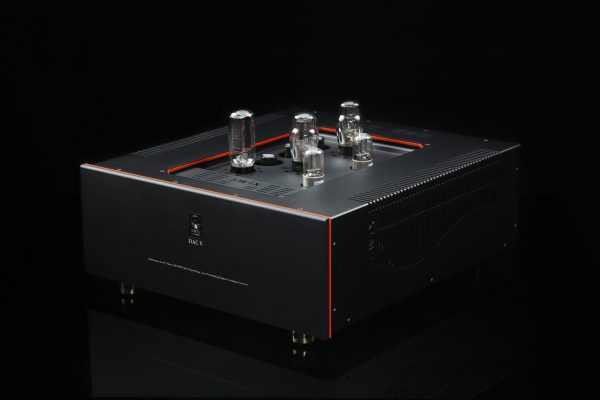Dutch Audio Event 2025: KlangQ met SW1X
By Max Delissen at Hifi.Nl (Translated to English)
The great thing about the Dutch Audio Event is that, in addition to the well-known larger mainstream brands, you also come across many interesting smaller companies that approach the hi-fi market with just as much—and perhaps even more—passion. The British brand SW1X is one such company. In the Netherlands, it’s represented by importer KlangQ, and early on Saturday morning I visited their room, where importer Armin Bos and SW1X designer Slawa Roschkow had set up a very special system that, even at the low volume it was playing during our conversation, constantly managed to draw my attention.
The man behind SW1X
Roschkow, who is well known in audiophile circles for his fondness for (triode) tubes, TDA1541 converter chips, and field-coil full-range loudspeakers, has a clear philosophy:
“I don’t use these old technologies because vintage is trendy, but because they fit my vision of music reproduction best. I believe tubes have a better tonal character than transistors. They are, like high-efficiency speakers—especially field-coil speakers—better in dynamics and speed, and those are the key qualities that make music reproduction feel realistic. I also use full-range speakers because they operate without sound-blurring crossover filters and, being point sources, deliver all frequencies of the reproduced music simultaneously and in phase to the listener’s ear.”
“I don’t believe the goal in music playback should be extreme bandwidth or ultimate resolution. What really matters are simple circuits with short signal paths and the use of components best suited for each place in the circuit. That’s why, in our streamer and DAC, you’ll find tubes in places that might seem odd at first glance—like in the clock or the S/PDIF output driver. I’ve found that tubes simply operate more quietly there than transistors or integrated circuits, which results in a purer signal.”
Dynamic Element Matching
When I asked what makes the TDA1541 converter chip so special, Roschkow began enthusiastically:
“The unique thing about the TDA1541 is an integrated mechanism called Dynamic Element Matching (DEM). It uses an oscillator to actively oscillate the six most significant bits (MSB). Instead of assigning one fixed current source to each bit, the current sources are rapidly switched or rotated among the bits. Normally this switching is controlled by an internal DEM oscillator, but in our design, it’s done externally.”
“This process averages out all quantization errors, improving the accuracy of the MSBs. DEM is thus a clever way to turn imperfections in the chip’s manufacturing process into a dynamic mechanism that increases analogue precision—resulting in a cleaner, more organic sound. SW1X is the only company offering the TDA1541 with an external, tube-based active oscillator. The result is a superior, lively, fluid, and analogue-like sound that no other TDA1541 implementation can produce.”
On another level…
SW1X is an unusual name—according to Roschkow, “SW” stands for the first and last letter of his name, while “1X” represents his One-Extreme design philosophy, emphasizing the highest possible level of musicality. To achieve that, all devices are hand-built, and each model is available in several “Levels.”
When I remarked that this approach resembles that of Audio Note, he smiled, clearly amused:
“I’m always honoured when my brand is compared to Audio Note. I admire their philosophy, which indeed overlaps with mine, but I approach it slightly differently. With them, the higher levels mainly mean better components—like using silver wire instead of copper or higher-grade capacitors. In my case, the levels differ at the circuit level. A higher level means the circuit itself is actually different.”
Listening
With that out of the way, it was time to listen. The setup consisted of the VDT II streamer, DAC III Balanced, PRE III LPX preamplifier, AMP V Titan integrated amplifier, and MTR 963 monitor speakers. These near- to mid-field monitors are designed for small to medium-sized rooms and feature a special oval full-range driver (made by Roschkow himself)—here with an AlNiCo magnet, though also available in field-coil form. The driver has a paper low/mid cone, a whizzer cone for the high frequencies, and a solid wooden phase plug.
During the session, Armin Bos, who had stayed mostly quiet throughout our talk, played a variety of recordings—many of which I wouldn’t necessarily call “audiophile-approved.” A small selection: we began with De Do Do Do De Da Da Da by The Police, a good but not overly polished 1980 recording, and it sounded wonderfully tight and dynamic! Yet also full-range, with deep, extended bass and a well-balanced, non-harsh treble. The reproduction was extremely neutral.
I’ll admit, I’m not always a fan of full-range drivers with a whizzer cone—often they sound a bit “shouty” in the upper midrange—but here the sound was pristine, neutral, transparent, and engaging.
Then came something truly “audiophile-approved”: the ECM live recording of Night by Anja Lechner and Misha Alperin. A challenging piece, with slow, almost tribal drums, Alperin’s peculiar vocalizations, and Lechner’s bow scraping across her cello strings. The recording’s dynamics were breathtaking, the amount of texture dizzying. Yet despite being drawn deeply into the music, everything still sounded reassuringly natural and refined.
A revelation—there’s no other word for it. And how wonderful that importer KlangQ deliberately chooses to support brands like this. They deserve not just to be heard, but to be experienced.
Translated from original article in HiFi.Nl magazine
